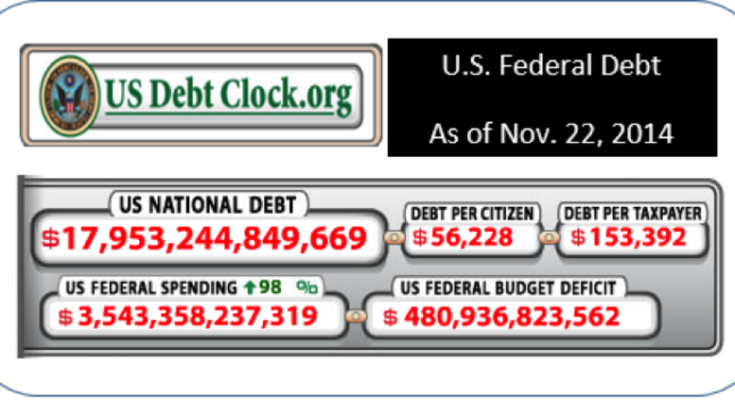The world’s central bankers started QE (Quantitative Easing) programs and government debt buying back in late 2008 as a “temporary†measure to provide liquidity to struggling economies. Ever since 2008 people have been debating when U.S. interest rates will be heading back up.
Answering that question requires insight into politics more than it does economics. Who benefits the most from artificially low interest rates? Debtors. What entity is the world’s largest debtor? America’s federal government, with almost $18 trillion in debt as of November 2014.

While technically an independent body, the U.S. Federal Reserve Bank (The Fed) serves at the pleasure of the President. Federal Reserve Chairmen are appointed by sitting presidents and can be removed by them. The same is true for the heads of the Bank of Japan (BOJ) and the European Central Bank (ECB), although the latter institution is a multi-nation appointment.

Total Federal debt rose by 52% since FY 2000. From 2000 – 2008 annual interest expense rose by $89 billion as debt expanded. Over the most recent six years, debt more than doubled from where it finished out on Sept. 30, 2008.
Read More at: Â MutualFunds.com

